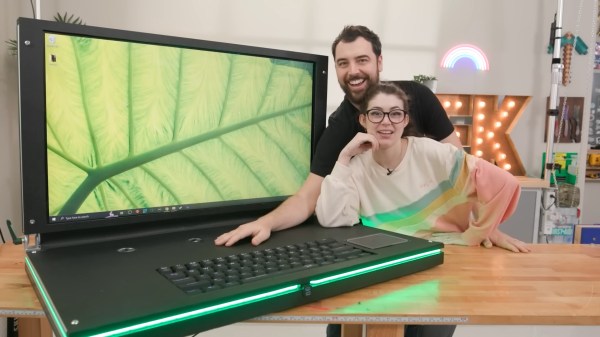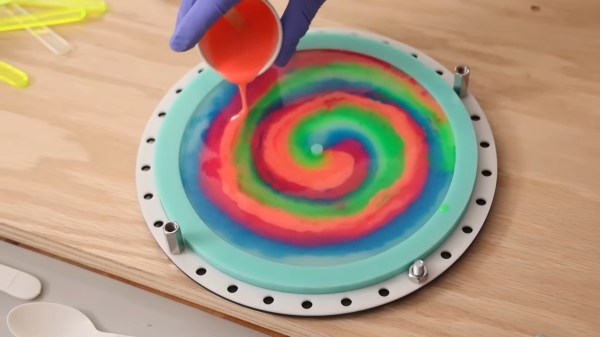Sometimes a project needs to go big, and [Evan and Katelyn] threw portability to the wind to build the “world’s biggest” laptop.
Stretching the believability of “bigger is better,” this laptop features a 43″ screen, an enormous un-ergonomic keyboard, and a trackpad that might be bigger than your hand. Not to be outdone by other gaming laptops, it also features RGB lighting and a logo that really pops with neon resin.
The pair started the build with an aluminum extrusion frame joined by hinges. Plywood forms the top lid and bottom of the device, and the interior was covered with a mix of vinyl and ABS to keep everything tidy. A nice detail is the windows cut in the area above the keyboard to keep an eye on the charge of the two battery packs powering the laptop. Weighing more than 100 pounds, we suspect that this won’t be the next revolution in computing.
If you need more supersized gadgets, maybe try out the world’s biggest working keyboard or this giant Xbox Series X?













